Starting in the mid-1930s, the Ford Motor Company used a bushel of soybeans in every car it made. No, they weren’t using soy sauce as wiper fluid. Henry Ford had challenged his engineers to figure out how to turn soy into plastic. At first, they used this soy plastic for gas pedals, window frames, horn buttons, and the knobs at the end of gear shifter rods — among other things. But in 1941, Ford unveiled the “Soybean Car,” which replaced much of the steel with that soy plastic. It was half a ton lighter than the all-steel car it resembled, as well as safer. Sadly, it didn’t enter production, so we were never blessed with car names like the Ford Tofu or the Mercury Miso.
I tell you this partly because it’s a great story, and partly because it highlights one of the most important things about soybeans. While they’re members of the legume family, their unique biochemistry makes them different and often, in really useful ways.
Because of some of these unique qualities, the soybean has become one of the world’s most significant calorie crops. In fact, every year, we humans grow 364 million tons — enough soy to provide 91 pounds to every person on Earth. But the fact is, most of that soy isn’t turning into tempeh or edamame. Livestock gets the vast majority of soybeans. And the lions’ share of the soy eaten directly by people is consumed in the form of cooking oil.
Should You Eat Soy?
However, soy does get eaten by people — especially in many Asian cultures, where it has a long-standing role as a major source of nutrition. In fact, the Chinese word for soybean is “dàdòu,” which means “the greater bean.”
Legumes like soy make up a substantial portion of the diets in the Blue Zones — the areas around the world known for longevity, with many people living to 100 years or older. Traditional Okinawans — who live in the Blue Zone of Okinawa, Japan — eat a lot of soy, mainly in the form of tofu and miso. And they have among the world’s highest life expectancies. And the soy-eating Okinawan elders are among the healthiest people in the world, as demonstrated by the Okinawa Centenarian Study, a 25-year study sponsored by the Japanese Ministry of Health, Labour, and Welfare. Compared to North Americans, they have a staggering 80% less breast cancer and prostate cancer — and less than half the ovarian cancer and colon cancer.
And studies have also found that regular consumption of whole soy foods is associated with lower rates of heart disease, type 2 diabetes, and many forms of cancer.
But soy has also been subject to some controversy in the health community. Soy accusations include promoting everything from “man boobs” to breast cancer — and related headlines tend to circulate the internet regularly. There’s also controversy around soy farming contributing to rainforest destruction. And then, there’s the fact that most soy grown today is genetically engineered, and that much of the soy consumed by people is highly processed.
But does that mean, for instance, that you should avoid organic whole soy foods like tempeh? What are the facts about soy? What’s good about it, and what considerations are necessary when adding it to your diet? And what are some of the best ways to consume soy? Let’s dive in and get the facts on soy.
What is Soy?
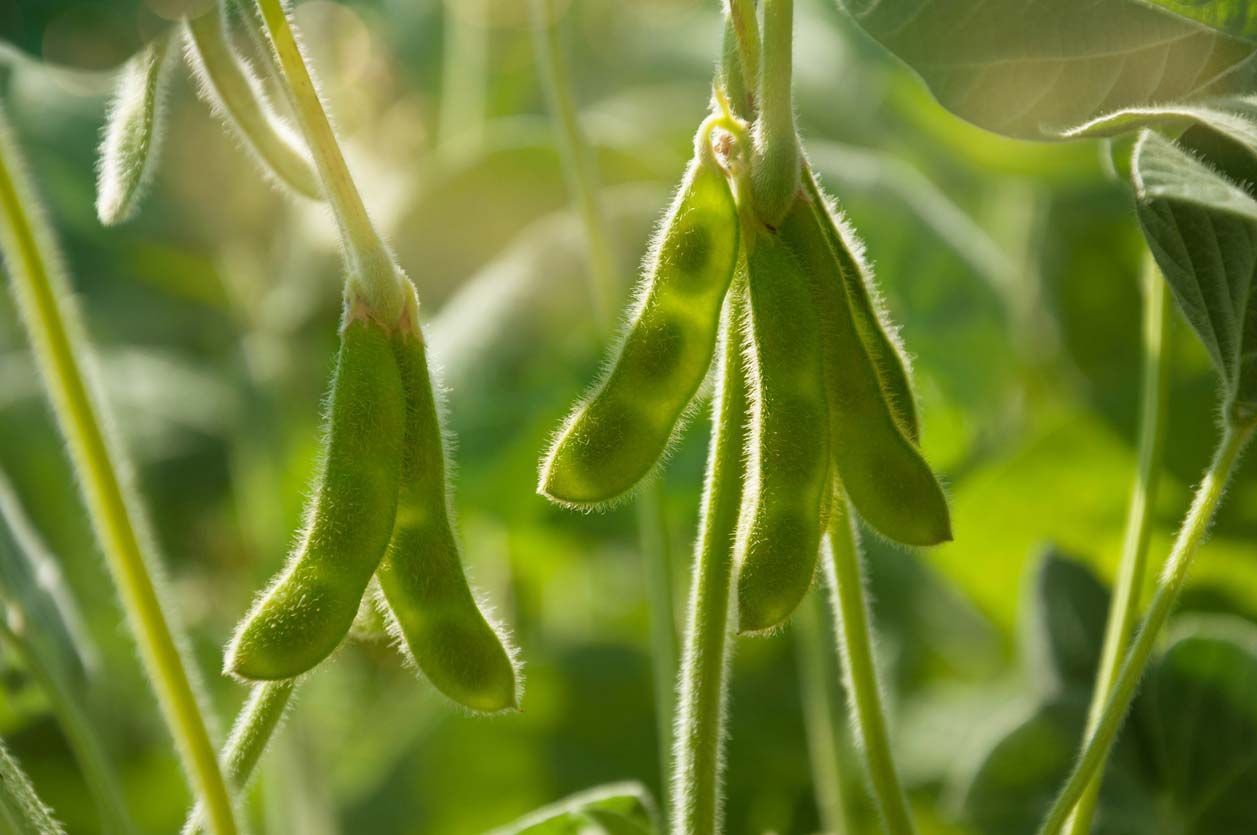
Soy refers to soybeans, also called soya beans in the United Kingdom, which are seeds of a plant called Glycine max. Soybeans are legumes that are native to East Asia. When they’re dried, soybeans are light tan or pale yellow in color. Mature dried soybeans can actually be found in a variety of colors like black, brown, and even blue.
When soybeans are fresh or frozen, however, they’re always green in color. Fresh, undried soybeans are called edamame. And they’re often sold in their pods: raw, frozen, or pre-cooked by boiling or steaming.
Where is Soy Grown & How Is It Used?
Even though soy is native to East Asia, it’s now grown abundantly in Brazil, Argentina, India, Paraguay, Canada, and the United States — the latter, which grows the most of any nation. From humble beginnings — a few seeds grown by a colonist in Georgia in 1765 — soy has colonized much of American cropland. In fact, in the US each year, there are approximately 83 million metric tons of soybean grown on 75 million acres of land. That’s more than 100 times the size of the entire state of Rhode Island.
For comparison, wheat covers about 50 million acres, while corn tops the charts with 90 million acres. But unlike those crops, soy can actually return fertility to soil if grown responsibly. George Washington Carver (yes, the famous peanut scientist you may have learned about in school during Black History Month) found that rotating soybeans into planting cycles actually increased the cotton yield due to the legume’s ability to transfer inert nitrogen from the air to the soil.
You can see that soy could be some kind of wonder-crop, feeding people, replacing petroleum in manufacturing, and replenishing agricultural soil. Unfortunately, we’re using most of our soy crop in wasteful and environmentally harmful ways. More than 70% of the enormous amount of soy grown in the United States is fed to livestock. And of the soy consumed by humans in the US, South America, and Europe, a lot of it is processed into soy oil and soy protein isolate, among other items and ingredients. On the other hand, in Asian countries, whole soybeans and fermented soy products meant for direct human consumption — like edamame, tempeh, natto, and soy nuts — have been much more common for centuries.
Soy Nutrition Facts

The soybean is significantly higher in fat, lower in carbohydrates, and slightly higher in protein than other legumes. It tends to be more digestible than other plant proteins and contains all nine essential amino acids. (In this case, “essential” simply refers to the ones that our bodies cannot metabolize, and so we must source them from food.) The carbohydrates in soybeans are primarily oligosaccharides, which appear to promote healthy gut microbiota like Bifidobacteria by acting as a prebiotic in the intestinal tract. The fat content of the soybean contains 19% to 41% monounsaturated fats, 46% to 62% polyunsaturated fats (including a modest amount of omega-3 fatty acids), and 10% to 15% saturated fats. Soy also includes a wide array of vitamins and minerals.
One-half cup of roasted mature soybeans has the following nutritional composition:
- Calories: 400
- Protein: 33 g
- Total Fat: 22 g
- Fiber: 15 g
- Calcium: 120 mg
- Iron: 3.5 mg
- Magnesium: 125 mg
- Phosphorus: 310 mg
- Potassium: 1265 mg
- Folate: 180 µg
The soybean also contains a small amount of zinc, copper, selenium, manganese, vitamin C, and B vitamins.
6 Health Benefits of Soy
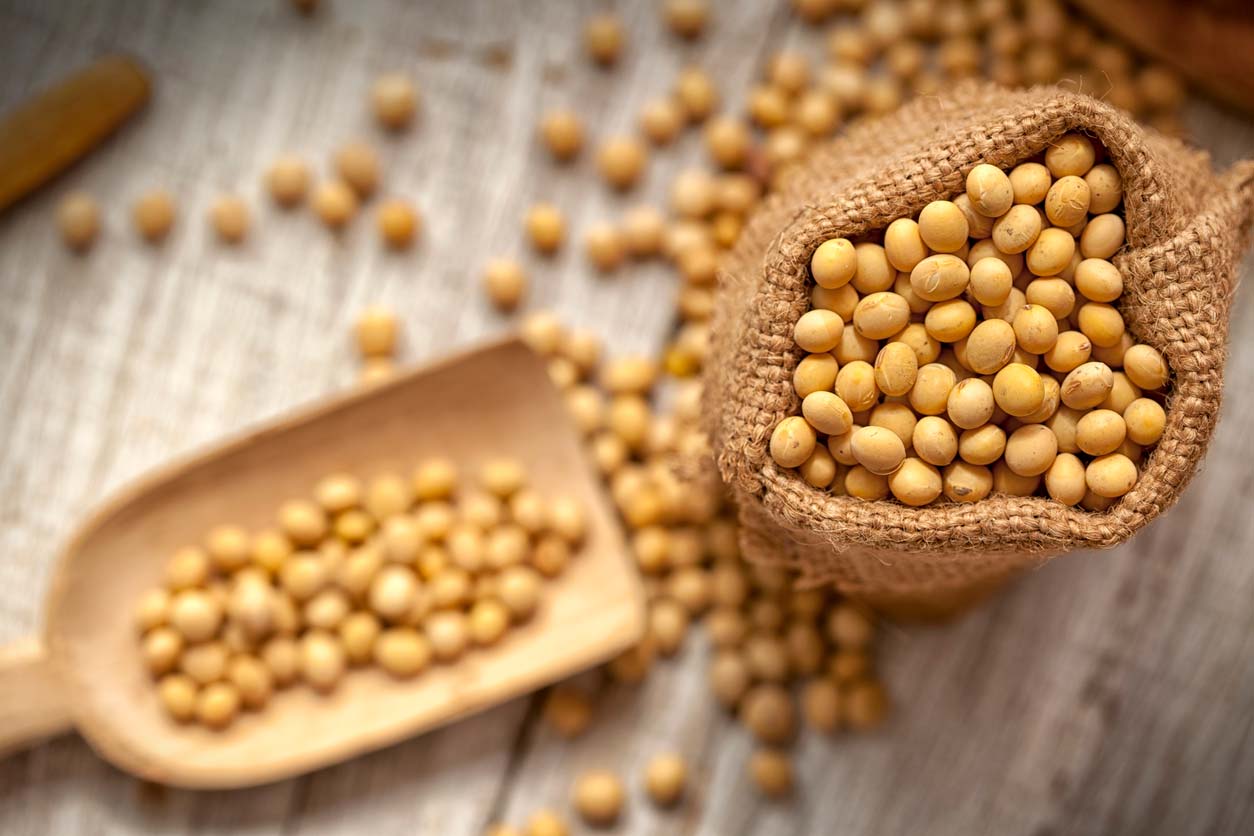
The soybean offers some substantial health benefits. Some of the most well-known, evidence-based benefits of soy include the following:
1. May extend life
One 2020 study from Japan found that regular consumption of fermented soy foods — specifically miso and natto — may reduce all-cause mortality risk. The researchers had access to health data from 11 public health centers, including information from 42,750 men and 50,165 women between ages 45-74. Overall, the participants who consumed the most fermented soy foods had a 10% lower risk of all-cause mortality than those who ate the least amount of fermented soy foods. The authors also found an association between fermented soy food intake and reduced risk for cardiovascular disease.
2. May help treat menopause-related hot flashes
Hot flashes are a common complaint among women during menopause. Some studies have found a lower incidence of hot flashes among menopausal women who consumed soy foods, compared to those who didn’t. A 2019 study published in the European Journal of Clinical Nutrition found that women who consumed soy products (but not soy milk) experienced fewer reported hot flashes. Another 2019 study discussed how the soy isoflavone genistein could have therapeutic effects on menopause symptoms like hot flashes, as well as a number of menopause-related diseases, with few to no adverse side effects.
3. May help prevent metabolic syndrome
Metabolic syndrome is a cluster of chronic conditions that commonly occur together, including high blood sugar, high blood pressure, having extra fat around the abdomen, and abnormally high cholesterol or triglyceride levels. Having metabolic syndrome increases your risk for stroke, heart disease, and type 2 diabetes. A 2019 study published in the European Journal of Clinical Nutrition examined the association between regular consumption of soy protein/isoflavones with metabolic syndrome incidence among 5,500 Korean men and women over 40 without metabolic syndrome at baseline. The authors found that regularly eating soy foods was protective against metabolic syndrome. And the most protective effects were seen among those who ate soy foods often.
4. May help prevent bone loss and increase bone mineral density
As we age, our bone mineral density typically declines, increasing the risk of developing degenerative skeletal diseases like osteoporosis. Factors like weight-bearing exercise (e.g., walking, running, playing tennis), and getting enough calcium and vitamin D, are known to have protective effects on bone strength. And it turns out that soy isoflavones may also help maintain bone density. A 2020 meta-analysis examined 52 research trials to determine if there was a link between soy isoflavone consumption and bone mineral density. The researchers found that soy isoflavones could help prevent osteoporosis in people of all weights.
5. Contains compounds that may help fight chronic diseases
Soy contains phytochemicals known to have protective effects on a host of conditions. One such group of phytochemicals is called glyceollins, which are actually produced by certain leguminous plants as defense molecules in response to stress. Though it primarily examined animal studies, a 2017 review found a substantial amount of evidence that consuming glyceollin-rich soy could offer a number of benefits, such as improving insulin sensitivity, reducing inflammation, lowering cholesterol, fighting free radicals, and possibly slowing or inhibiting tumor growth. A 2013 study noted that glyceollins have distinct bioactive properties that may lower LDL “bad” cholesterol and high triglyceride levels. And a 2018 study even discussed how glyceollins may trigger antioxidant activity that can have neuroprotective effects.
6. Is a healthy source of plant-based protein
Soy contains all nine essential amino acids, including an abundance of lysine, methionine, cystine, threonine, and tryptophan. A cup of tempeh, made from fermented soybeans, contains 34 grams of protein — half of the daily requirement for many adults.
Soy Controversies: Separating Fact from Fiction
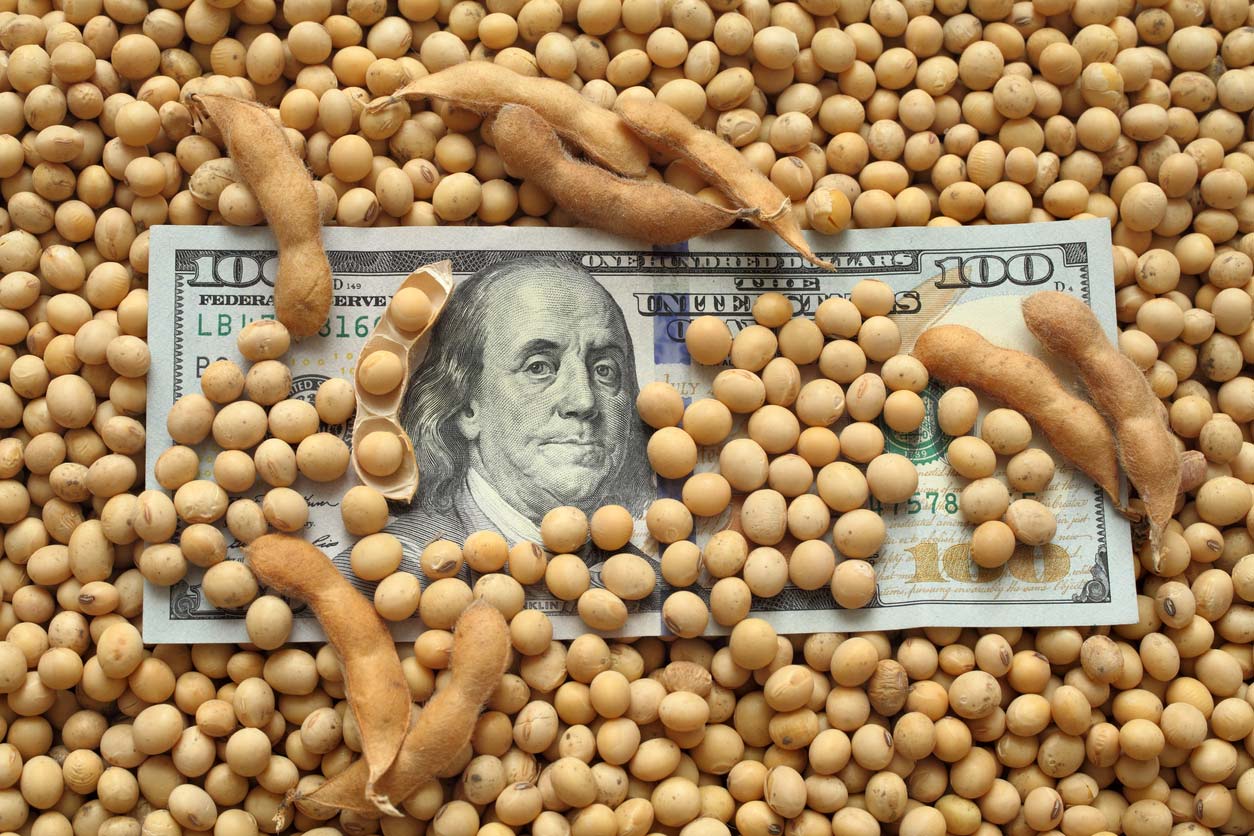
Soy has been studied widely. In fact, more than 2,000 peer-reviewed studies related to soy and health have been published. Given that the bulk of these studies have documented substantial health benefits, and the fact that many of the world’s healthiest and longest-lived peoples are avid consumers of soy, you might think there’s consensus on soy benefits and facts.
Unfortunately, that’s not the case. There’s a lot of controversy. I was about to write “a surprising amount of controversy,” but when you consider who funds the anti-soy movement, it’s actually not surprising in the least.
In the 1970s, the vegetarian movement turned to soy as a substitute for meat and dairy because it’s versatile, high in protein, cheap, and much more environmentally friendly than animal agriculture. And while the movement started small, and the initial soy-based meat and dairy analogs were pretty mediocre in terms of taste and texture, the meat and dairy industries saw it as a threat to their bottom line. From funding anti-soy research to creating “astroturf” organizations (i.e., industry shills pretending to be grassroots movements), to purchasing large amounts of advertising and PR, to extensive lobbying, animal agriculture sought to scare the public away from soy consumption.
And they did a pretty good job of it, judging by the myths and lies that still swirl around this most excellent legume. In fact, if you aren’t confused about soy to some extent, you probably haven’t spent much time on the internet. So let’s address some of the most common accusations and beliefs surrounding soy and see what the science and facts actually tell us.
Soy Concern #1: Soy Causes Cancer
One of the main anti-soy claims is that it can cause or promote cancer — especially hormone-related cancers such as breast, thyroid, prostate, and ovarian cancer. But the truth is, there’s much more evidence in support of whole soy foods for cancer prevention. And incontrovertible evidence that the foods that soy replaces — meat and dairy — are cancer accelerators.
For many years, cancer patients — especially those with hormone-related cancers — were often encouraged to avoid soy either during or after treatment, as well as to prevent onset or recurrence. This was because soy was believed to mimic the effects of the hormone estrogen (the fancy scientific word for this is “estrogenic”), which is implicated in the development of breast cancer after menopause. While there have been conflicting conclusions drawn from studies throughout the years, the confusion usually stems from compounds in soy called isoflavones. Some researchers have said that soy isoflavones possess both estrogenic and anti-estrogenic effects on breast cancer cells.
The Truth:
1. Phytoestrogens reduce estrogenic activity
Warning: This paragraph gets technical. Soy isoflavones have a similar chemical structure to human estrogen, which allows them to weakly bind to two types of estrogen receptors in the body, referred to as ERα and ERβ (pronounced “alpha” and “beta”). The reason these isoflavones are called phytoestrogens is because, under certain experimental conditions, they can exert estrogen-like effects.
However, estrogen and isoflavones bind differently to estrogen receptors. Estrogen binds equally to both ERα and ERβ, whereas isoflavones prefer ERβ and are therefore called selective estrogen receptor modulators. This is notable because the effects of binding to the two receptors have different physiological effects — sometimes even opposite ones. In some cases, phytoestrogens from soy bind to estrogen receptor sites in the human body and actually reduce estrogenic activity, kind of like sticking a nickel into a coin slot to prevent the insertion of dimes. So instead of leading to more estrogen-related cancers, according to this theory, soy should actually reduce them by blocking that “coin slot.”
2. Soy protects against breast cancer
And that’s just what the preponderance of scientific evidence shows. Overall, the effect of soy consumption on breast cancer risk seems to be highly beneficial. A huge 2003 study published in the Journal of the National Cancer Institute found that women with a high intake of soy (in the form of miso soup) reduced their risk of breast cancer by 54% compared to women with a low intake of soy, and a 2010 study published in JAMA concluded that soy products actually reduce rates of breast cancer recurrence and cancer mortality.
Although soy consumption, on the whole, reduces cancer incidence, there are questions about its effect on women who have estrogen-positive (ER+) breast tumors. These tumors are stimulated by estrogen. Might they, therefore, be stimulated by the weak estrogenic activity of the isoflavones found in soy? The jury is still out on this important question, but most experts align with the Oncology Practice Group of the Academy of Nutrition and Dietetics, which tells us:
“The current consensus among health experts who study soy is that breast cancer survivors can safely eat these foods. Emerging research suggests that soy foods may decrease the likelihood of breast cancer recurrence in women with a history of the disease.”
3. Protease inhibitors in soy inhibit cancer
If you’ve heard of protease inhibitors, it was probably in the context of drug treatments for HIV and hepatitis C. These compounds, synthesized in pharmaceutical laboratories, mess with an enzyme called protease (pronounced “pro-tee-ace”) that the viruses produce in order to cut proteins in fragments needed for them to continue the process of infection. It turns out that protease inhibitors, which naturally occur in soy as well as other plant foods, have powerful anticancer effects as well. Protease inhibitors found in soybeans have been shown to reduce the incidence of not only breast cancer, but also colon and prostate cancer.
Soy Concern #2: Soy Causes Breast Growth in Men
This belief has received tremendous attention. In fact, it’s probably one of the most joked about reasons why some men choose not to drink soy milk — to avoid “man boobs.” It’s part of the marketing narrative of the meat industry, which paints meat as “real food for real men” and views vegetarians and vegans as weak and feminized. Arnold Schwarzegger’s iconic line from the 2013 movie Escape Plan, “You hit like a vegetarian,” typifies this mockery. (Schwarzenegger has changed his tune – the former animal-protein guzzling bodybuilding champion, movie star, and politician is one of the stars of the 2018 film The Game Changers, which documents the benefits of a plant-based diet on athletic performance, strength, and endurance.)
What’s the basis in reality for this fear that soy will turn men into women, either physically or constitutionally? There is a case report from 2008 of a Japanese man who consumed soy foods and experienced growth in his breast tissue, as well as erectile dysfunction and decreased libido. When questioned, it turned out that he drank three quarts of soy milk per day, which was about nine times the amount normally consumed by Japanese men. A 2011 case report also chronicles a decrease in sexual desire and functioning in a 19-year-old male with type 1 diabetes whose diet consisted almost entirely of “large quantities of soy-based products.” The moral of these two stories, each of which features a single individual, is that unbalanced diets of any kind can be harmful.
In 2009, Men’s Health published a stridently anti-soy article based on the 2008 case report mentioned above. The article said that eating soy can cause male feminization. While the publication did eventually change their stance in future articles, it took years — and the original article is still widely circulated, perpetuating the misconception. As Paul Simon sang, “A man hears what he wants to hear and disregards the rest.”
The Truth:
1. Only over-consumption may pose an issue
Most people aren’t going to eat anywhere near the amount of soy consumed in these two case reports. In fact, you would probably develop a nutritional deficiency if you did. As with anything you eat, enjoy soy as part of a balanced diet, and you’ll be fine.
2. Feminization from soy is rare
The likelihood of soy causing a “feminization” effect in male breast tissue, under anything like normal consumption patterns, is rare to non-existent. Numerous studies have shown that there’s no rise in estrogen levels among men who consume soy foods, nor is there an effect on testosterone levels. A 2010 meta-analysis of 15 placebo-controlled studies concluded that “neither soy foods nor isoflavone supplements alter the measures of bioavailable testosterone concentrations in men.”
3. Dairy, on the other hand…
If anything, dairy products are more likely to contain hormones that could cause breast growth in men. Dairy products contain exogenous estrogen, which has been found to reduce secretion of testosterone in men. It makes sense, if you think about it, that the milk from a lactating mammal would have an impact on human hormone balance. Especially when you consider that many dairy cows receive hormones to increase their milk production.
Soy Concern #3: Soy Inhibits Thyroid Function
There have been concerns that consuming soy can have a negative effect on thyroid function and can even alter levels of thyroid hormones.
Some research has indeed suggested that soy foods may contribute to hypothyroidism (basically, an underachieving thyroid gland, which can lead to a sluggish metabolism, weight gain, and fatigue, among other symptoms) or make it worse. In some cases, goiters — or the abnormal enlargement of the thyroid gland — have been seen among babies fed soy infant formula.
Additionally, soy isoflavones may inhibit the activity of thyroid peroxidase, an enzyme that helps add iodine to a protein that produces the thyroid hormones that regulate critical bodily functions like growth and metabolism. One review of the literature from 2002 suggested that estrogenic and goitrogenic (“goiter-causing”) effects are of concern when eating soy foods.
The Truth:
1. More iodine, not less soy
One important thing about that 2002 paper: almost all the evidence cited was from studies on rats, not humans. And even in the rats, researchers actually failed to find a correlation between hypothyroidism and genistein (an isoflavone and phytoestrogen). This puzzled the authors of the paper, who surmised that some as-yet-unidentified “additional risk factors” must come into play for soy to damage thyroid function. What could one of those risk factors be? Seen in association with iodine deficiency, it’s more likely that it was the iodine deficiency causing the problem, not the soy.
It is true that if you eat too much soy and your diet is deficient in iodine, your thyroid gland may become swollen and underactive, you may develop symptoms of hypothyroidism (such as lethargy and depression), and your risk of thyroid cancer could increase. But the answer isn’t to avoid soy. It’s to make sure you consume enough iodine. Studies tell us that soy does not cause thyroid problems in people who consume adequate amounts of iodine.
Meeting iodine requirements is pretty easy, and can be achieved either with ¼ teaspoon of iodized salt per day, increasing your intake of sea vegetables, or with a reliable iodine supplement.
In the 50s and 60s, some infants were fed soy formulas that caused enlargement of their thyroid glands. But these formulas did not contain iodine. So again, the real cause was most likely the lack of iodine, and not the soy itself. Soy formulas afterward have been fortified with iodine, which solved this problem.
2. Soy formulas with iodine are safe for babies
A 2018 review searched and examined global studies between January 1980 to June 2017 related to soy infant formula and phytoestrogens, to assess what is currently known about how phytoestrogens in soy formula may impact child development. The authors concluded that soy formulas are not associated with any relevant abnormalities, including sexual development and reproductive function, neurobehavioral development, immune function, or thyroid function. Of course, any discussion of infant formulas needs to come with a very clear disclaimer: For almost every baby, the milk from its own mother is best if available. Infant formulas of any kind, whether soy or dairy-based, should be seen as an option only when milk from their human mother is not available.
3. Soy has little to no effect on thyroid hormones
A review and meta-analysis of 18 studies found that soy supplementation has no effect on the thyroid hormones, and only modestly raises TSH (thyroid-stimulating hormone) levels. This may affect people who already have hypothyroidism, but it seems unlikely that it’s clinically significant enough to show a correlation. Overall, the link between soy consumption and thyroid problems seems very weak.
Soy Concern #4: Soy Isn’t Good for Your Heart, After All
The US FDA almost never endorses any specific food for its health efficacy. But in 1999, citing an overwhelming body of evidence that soy consumption could help to reduce heart disease, the FDA issued a ruling that allowed products containing at least 6.25 grams of soy protein to state that:
A total of 25 g of soy protein a day, as part of a diet low in saturated fat and cholesterol, may reduce the risk of heart disease. A serving of [name of food] supplies __ g of soy protein.
You may have seen this, or variations of it, on product labels.
So why the controversy? In a rare, potential about-face, the FDA released a statement in 2017 that it was considering revoking its endorsement of soy for heart health. The main argument against the pro-heart health statement was that “some studies, published after the FDA authorized the health claim, show inconsistent findings concerning the ability of soy protein to lower heart-damaging low-density lipoprotein (LDL) cholesterol.” At the time, it was widely anticipated that the proposed revocation would go into effect within a matter of months. But as of this writing, it has not. So what’s the deal?
The Truth:
1. Lobbyists have an influence
We don’t always know exactly what factors lead the FDA to make the choices it makes. But one thing’s clear: as a government body, it is not immune from the influence of lobbyists or political forces. In this case, the meat and dairy industry stand to lose out if soy is more widely consumed because soy products are often consumed in place of animal products. And the soy farming industry, ironically, could lose too — since most of our soy crop is fed to livestock. But despite it’s announced intention, the FDA hasn’t as of now followed through.
2. Science does say soy is good for your heart
Perhaps part of the reason could be new reports that continue to come in. For instance, a 2019 cumulative meta-analysis published in the Journal of the American Heart Association concluded that soy is heart-healthy and that it lowers LDL “bad” cholesterol that can increase risk for heart disease. And in a study published in 2020 in the American Heart Association journal Circulation, researchers examined data from 200,000 people and found that eating at least one serving of tofu per week was linked to an 18% lower risk of heart disease compared to those who rarely ate tofu.
Soy doesn’t just help to bring down LDL (‘bad”) cholesterol levels. A 2011 study concluded that when people ate 30 grams of soy foods per day (equivalent to an ounce of tofu), they raised their HDL “good” cholesterol levels by 1-3% and lowered triglycerides by up to 5%.
Clinical research has also shown the ability of soy foods to help lower high blood pressure. In two meta-analyses from 2010 and 2012, soy isoflavones were shown to improve impaired endothelial function among postmenopausal women, lowering their blood pressure and their risk for heart disease.
There’s still no telling what the politically influenced FDA might ultimately do. But the overwhelming body of evidence seems clear: For most people, soy can help to prevent cardiovascular disease and support heart health.
The Shadow Side of Soy
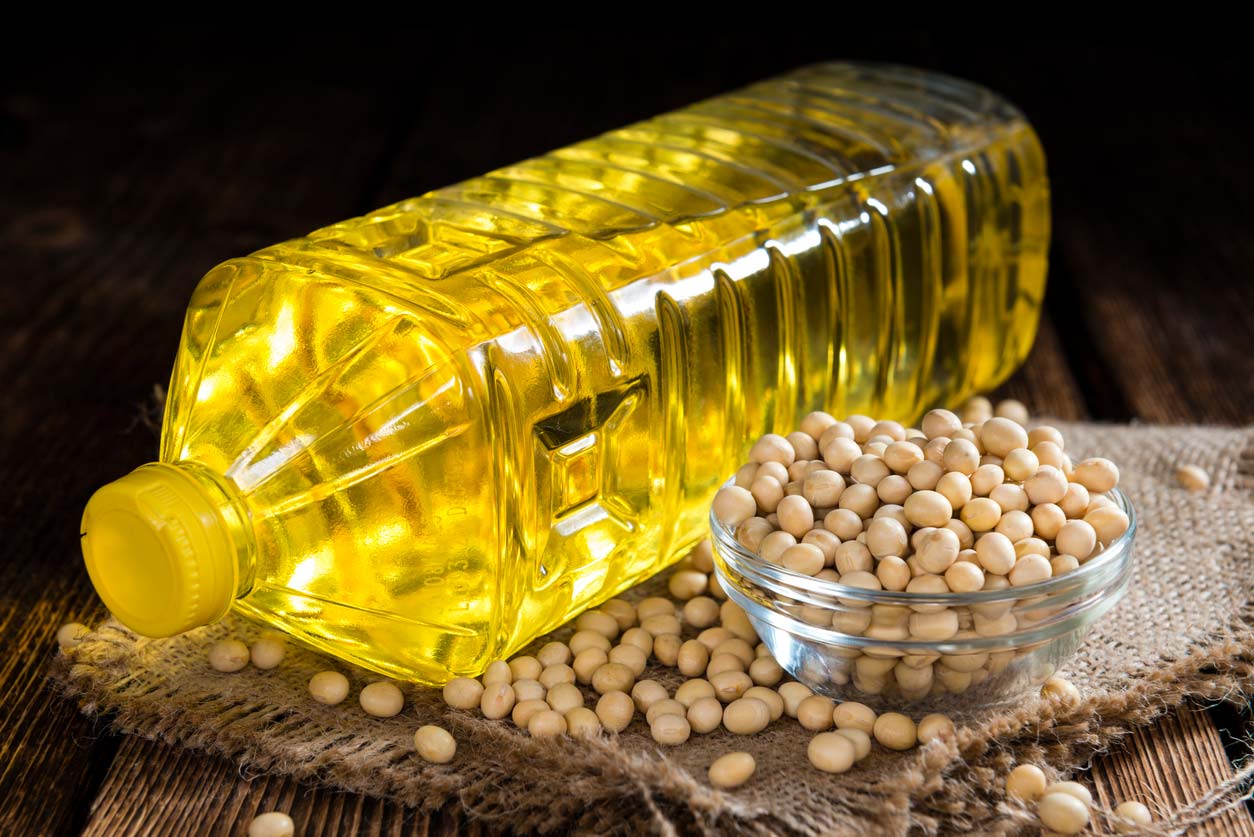
While there are many good things to say about soy, and most of the popular fears surrounding soy consumption are myths, there are a few meaningful concerns that prospective soy-eaters should consider.
Soy Allergy
Soy is one of the top eight allergens that must be clearly identified on food labels. In such an allergy, the proteins in soybeans bind to IgE antibodies made by the person’s immune system, causing the immune system to regard soy as a foreign invader requiring destruction. This triggers an excessive immune response that results in an allergic reaction. Obviously, if you have a genuine soy allergy, you need to avoid soy.
Processed Soy Foods
Most of the soy consumed directly by people is turned into soybean oil, soy protein isolates, and other refined products. These highly processed foods aren’t as good for you as eating whole soy foods. Soy oil contains none of the protein, fiber, or isoflavones that are so beneficial. And processed soy foods such as soy hot dogs, ice cream, or snack bars have much lower amounts of isoflavones than whole soy foods. They also tend to contain chemical additives, fewer overall nutrients, and have higher concentrations of trypsin inhibitor, which makes them harder to digest than whole soy foods. Furthermore, unless the soy-containing foods are certified organic or certified non-GMO, they contain genetically engineered soy.
Genetically Engineered Soy
In 2018, 94% of the soybeans in the US were genetically engineered. Most genetically engineered soy has been directly sprayed with glyphosate and other herbicides, some of which are carcinogenic. Glyphosate has made recent news for being the subject of more than 10,000 cancer lawsuits. Choose organic or non-GMO certified soy to steer clear.
Deforestation
Voracious global consumption of soy is a leading force behind destruction of the tropical rain forests. Monocrops often drive small-scale family farmers out of business. And soy is one of the biggest monocrops on the planet. But where is all this soy going? The vast majority isn’t turning into edamame, tofu, tempeh, or miso. It’s not even turning into soy burgers or soy milk.
Approximately three-quarters of the world’s soy harvest is used as livestock feed. This isn’t just inefficient. It’s a protein factory in reverse. Why? Because it takes about 12 pounds of feed (such as corn or soy) to create one pound of feedlot beef. For pork, it takes about seven pounds of feed to produce one pound of edible meat, and for chicken, about four. So, as counterintuitive as it may sound, if you want to save farmland and rain forests from being turned into soy plantations, you might actually be most effective if you eat more soy and less meat. There’s actually more soy in a pound of feedlot beef than there is in a pound of tofu.
How to Eat Soy
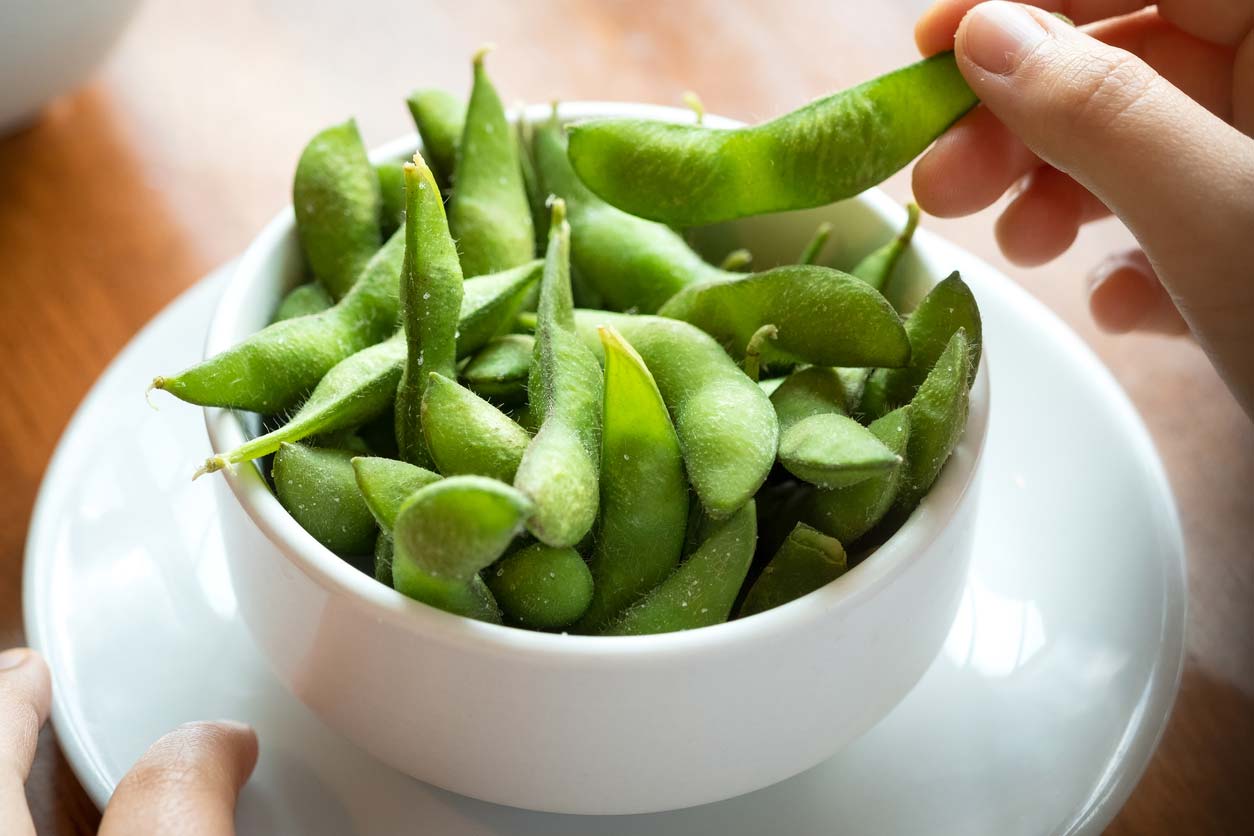
The best way to enjoy soy foods is in whole food form. As much as possible, choose organically grown and minimally-processed forms like soybeans, soy curls, edamame, soy nuts, and fermented soy foods like tempeh, natto, miso, and tamari. Second best are products like tofu and soy milk, particularly if they’re organic or at least non-GMO.
Some of the easiest and most versatile dishes that can be made using whole soy foods include stir-fries, noodle dishes, soups, and power bowls. Soy can be substituted for meat in almost any dish, such as in tempeh tacos, tofu scramble, or grilled tofu sandwiches.
Savory Soy Recipes
Soy is wonderfully versatile. It can be fermented into a miso paste and used as a condiment for flavoring many dishes. You can enjoy the immature soybean, called edamame, boiled or steamed as an appetizer or sauteed in a stir-fry. Nutritional powerhouse tempeh can sub-in for meat as it’s packed with protein (and fiber, a vital nutrient not found in meat!). Experiment with some of the great ways to use soy can, and let us know your favorite way to use organic soy foods as part of a healthy diet.
1. Ginger Miso Sprout and Carrot Salad

Miso is a salty Japanese condiment, produced from fermenting soybeans, that adds a salty umami flavor to dishes (and a healthy dose of probiotics, to boot!). When it’s combined with the nutty flavor of tahini and a touch of rice vinegar and lime, it makes a perfect dressing for this sprout and carrot salad. Make extra dressing so that you can use it on grain bowls and other salads throughout the week.
2. Sauteed Garlicky Mung Bean Sprouts with Edamame Beans

While edamame might be a favorite choice as a plant-based appetizer at restaurants, it can also be used in a wide variety of dishes. From stir-fries to bean burgers to this garlicky sauteed dish where it comes together with bean sprouts, the delightful edamame never disappoints!
3. Tempeh Bacon

This tempeh bacon has a sweet smokiness and can be used in many ways. Make a tempeh “BLT” (or “TBLT”) sandwich, add to grain bowls, crumble into salads, enjoy alongside a breakfast scramble… or eat it all by itself as a snack!
The Soy Takeaway
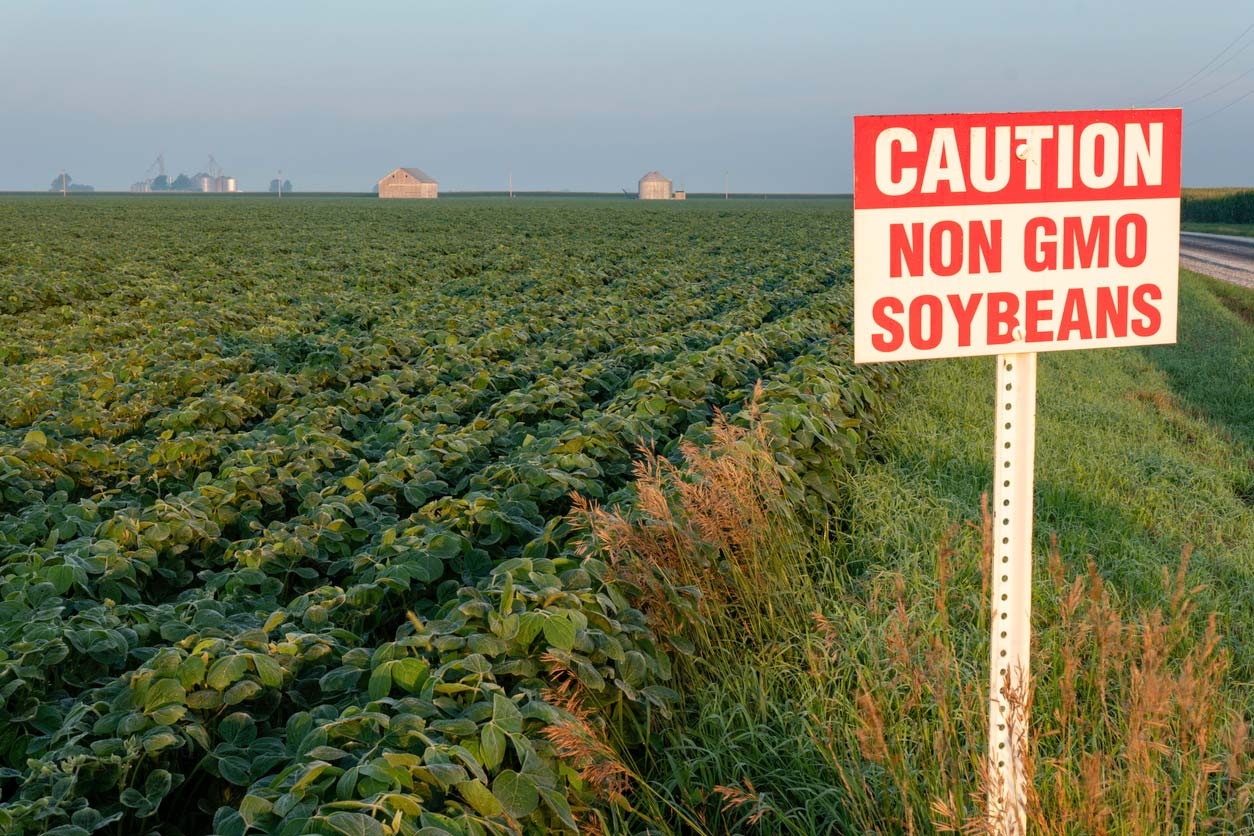
Soy is a highly nutritious staple enjoyed around the world. For most people, it can be beneficial in preventing chronic illnesses like cancer, heart disease, and type 2 diabetes, and in promoting life expectancy. It’s also an abundant source of plant-based protein. But most of the world’s soy crop is genetically engineered and then fed to livestock, which creates significant negative environmental impacts. And most soy eaten by humans is highly processed, which significantly erodes its nutritional value. But whole soy foods that are grown organically and consumed by humans can be sustainable and are a welcome, tasty, and nourishing part of a healthy, balanced diet.
Tell us in the comments:
- Do you typically enjoy soy foods? Why or why not?
- What’s your favorite way to incorporate whole soy foods like tofu, tempeh, or edamame into your diet?
- Are you feeling inspired to try any new soy foods or dishes?
Feature image: iStock.com/naito8




